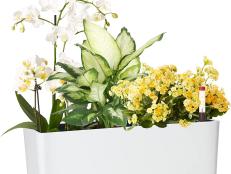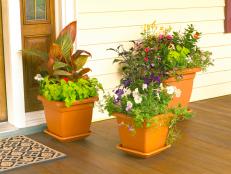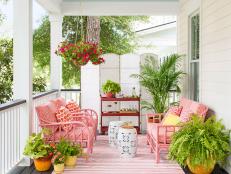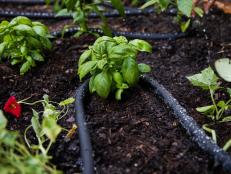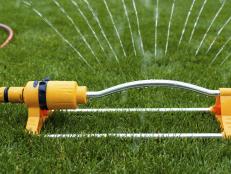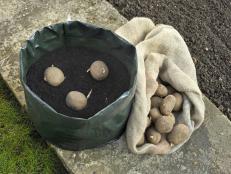How to Water Container Gardens

Gardener's Supply Co. at Gardeners.com
Give outdoor living spaces pizzazz with pots, window boxes and hanging baskets. Bright and perky container gardens dress a home with living color that’s tough to beat. The secret to keeping container gardens looking their best hinges on one activity: watering. Water too much or too little, and your pots will quickly become eyesores.
How do you know when to water? If plants wilt, that’s usually a sign soil is dry, but plants succumbing to root rot also wilt, so you need to check soil to know if it’s dry. Double-check by looking at soil (dry soil is lighter colored) or slipping a finger into pots. Another way to check for soil dryness is to gently lift the edge of a pot. Dry pots weigh less (lift one just after watering to learn how it feels when wet).
At the start of the growing season, plants need to be watered less frequently. As summer heat starts to sizzle and plants become lush, you may be watering containers once or even twice daily. Larger pots need watering less often than smaller ones, so it pays to embrace a bigger-is-better theme when it comes to containers.
Commercial bagged potting mixes designed for use in containers give the best results in terms of plant growth. These are soilless mixes, using a blend of various materials, including ground bark, coir, peat moss and perlite. Container blends don’t get waterlogged easily, which also means they need to be watered more frequently.
You can improve the way that commercial container mixes retain moisture in several ways. Blend water absorbing crystals into soil. These crystals turn into gel as they absorb water and slowly release it to plant roots. Or try using water-absorbent mats in the base of pots. These mats absorb and retain moisture, making it available to plant roots over the course of several days.
You’ll find several different types of water-absorbent mats. Hydromats are usually made from slow-to-biodegrade materials and offer variable degrees of longevity and reusability. Coir mats, sometimes sold as coco mats, biodegrade eventually. Hydromats made from polyethylene batting (similar to quilt batting) are washable and reusable from year to year, offering sustainability.
Self-watering conversion kits transform any container into a self-watering pot, or you can skip the kit and simply buy self-watering pots. These pots contain a reservoir in the bottom for holding water that keeps soil moist.
Drip irrigation systems for containers can make watering a hands-free affair. Install traditional microtubing systems that supply water via a hose and timer, or slip an inverted water-filled container, like a bottle of some type, into soil. Water moves or drips into soil as needed.
Many gardeners grab watering cans to irrigate pots or outfit a hose with a watering wand. Invest in a high-quality wand that allows you to buy replacement parts. That saves you money over the long haul, so that instead of replacing a wand each year, you might only need to replace the nozzle or turn-off valve every few years.







